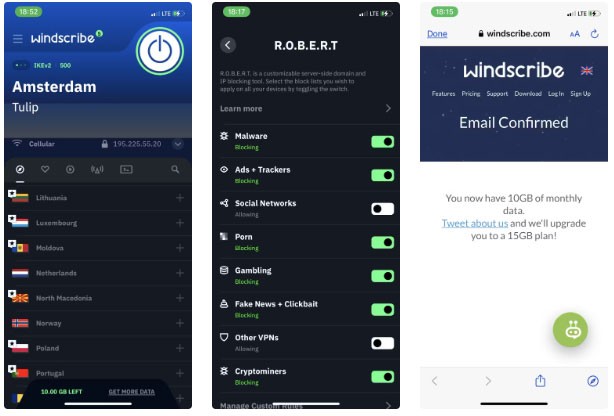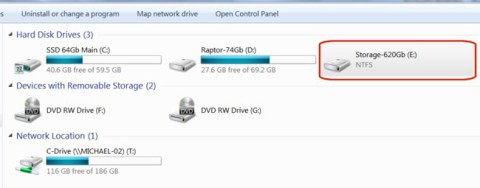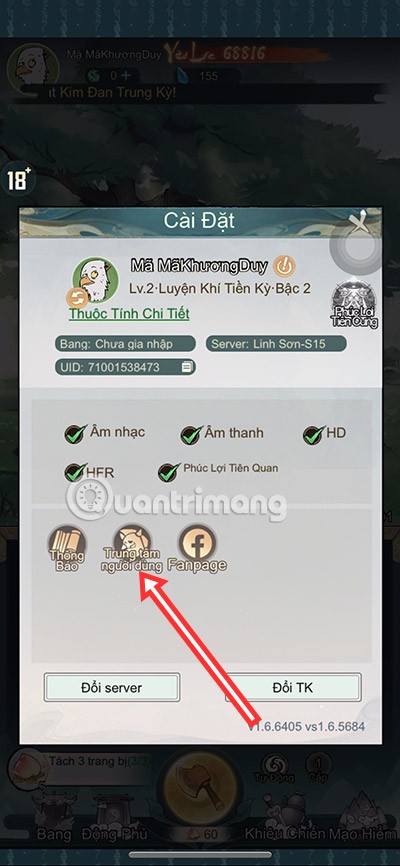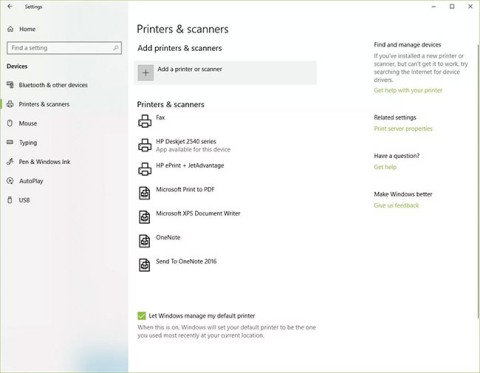The most commonly deficient nutrients in the diet

Diet is important to our health. Yet most of our meals are lacking in these six important nutrients.
Do you often find that your iPhone screen is too small to view content? You can easily fix this problem by connecting your iPhone or iPad to your TV. Here, we'll explore all the options available.
Wirelessly connect iPhone or iPad to TV using AirPlay
If you want to connect your iPhone or iPad to your TV wirelessly, the easiest way is to use AirPlay. However, you'll need to check that your TV supports AirPlay to take advantage of this method.
Apple TV is one of the easiest ways to add AirPlay to your TV, but it’s not the only way. Several TV manufacturers make TVs with built-in AirPlay support. These manufacturers include Samsung, LG, Sony, and Vizio.
If you don't have an AirPlay-enabled TV and don't want to buy an Apple TV, don't worry. There are AirPlay receivers available that allow wireless streaming to your TV. They cost less than the Apple TV.
Once your TV is ready to AirPlay, the rest of the process is pretty straightforward. Most popular streaming apps support AirPlay. Select the content you want to watch, then tap the AirPlay icon—stylized as a rectangle with an arrow along the bottom edge.
You may see a few options depending on how many AirPlay-enabled devices you have in your home, but you can easily recognize your TV by its name.


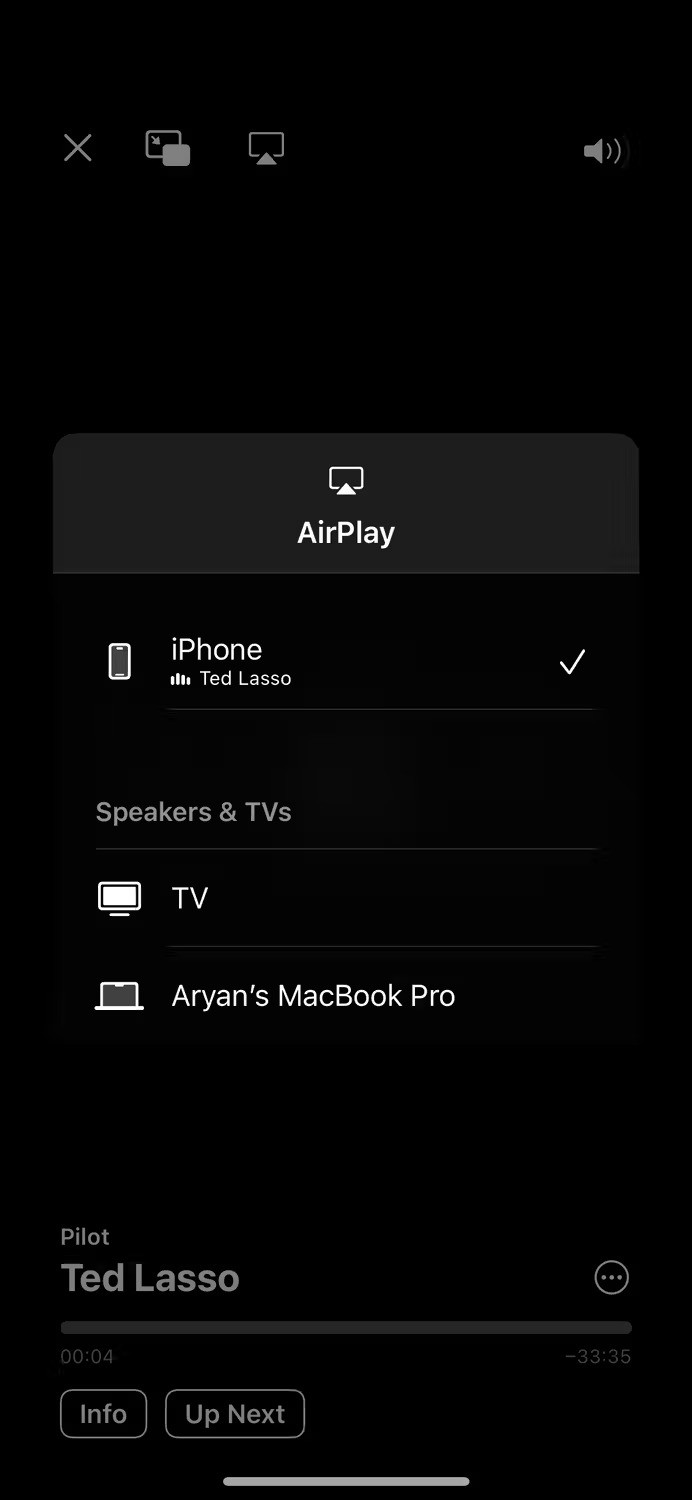
One caveat to this method is that not all iPhone or iPad apps support AirPlay. In such cases, you can usually mirror your iPhone screen to your TV . But if your TV doesn't support it, use the method below.
Cast content to TV using Google Chromecast
Chromecast device plugged into TV
If you're using a Chromecast , Google TV Streamer, or any other Google TV-enabled receiver, casting content to your TV can provide the best experience. However, keep in mind that not all apps are compatible with Google TV. For example, you can't cast content from the Apple TV app to your Chromecast.
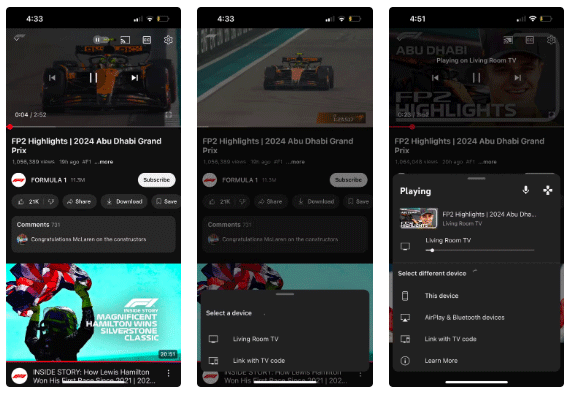
Unfortunately, mirroring your iPhone screen to a Chromecast isn’t as simple as that. While you can use an app like AirServer to mirror your iPhone to your computer and then mirror your computer screen to your TV, this isn’t practical and should only be used as a last resort. Instead, you’ll want to use a wired adapter to connect your iPhone to your TV.
Sure, using a wire might not be as aesthetically pleasing, but if you don’t have an Apple TV, it’s less of a headache in the long run than trying to deal with the problem of Chromecast and Apple not playing nice together. Plus, you can still easily enjoy your iPhone content on the big screen.
Connect iPhone or iPad to TV via HDMI
Connecting your iPhone or iPad to your TV via HDMI requires a few things. First, you need a free HDMI port on your TV—a relatively easy requirement. In the worst case, all you need to do is temporarily unplug any other devices you don’t need.
Second, you'll need the right cable or adapter for your iPhone or iPad. If you have an iPhone or iPad with a Lightning port, you can use Apple's Lightning Digital AV Adapter along with an HDMI cable to connect your device to your TV.
However, if you have an iPhone or iPad equipped with a USB-C port, use Apple's USB-C Digital AV Multiport Adapter, which costs $49, or a cheap USB-C to HDMI cable available on e-commerce platforms.

Now, all you need to do is plug the adapter into your iPhone or iPad, then plug the HDMI cable into the adapter. Finally, plug the other end of that HDMI cable into the HDMI port on your TV.
Note that if your iPhone or iPad has a Lightning port, output will be limited to 1080p. However, if you have an iPhone or iPad with a USB-C port, you can get 4K output, as long as your adapter or cable supports the HDMI 2.0 standard.
As you can see, there are a number of options for connecting your iPhone or iPad to your TV, which means that depending on the phone or TV you have, you may need to take a few extra steps to get things working properly.
See also:
Diet is important to our health. Yet most of our meals are lacking in these six important nutrients.
At first glance, AirPods look just like any other true wireless earbuds. But that all changed when a few little-known features were discovered.
In this article, we will guide you how to regain access to your hard drive when it fails. Let's follow along!
Dental floss is a common tool for cleaning teeth, however, not everyone knows how to use it properly. Below are instructions on how to use dental floss to clean teeth effectively.
Building muscle takes time and the right training, but its something anyone can do. Heres how to build muscle, according to experts.
In addition to regular exercise and not smoking, diet is one of the best ways to protect your heart. Here are the best diets for heart health.
The third trimester is often the most difficult time to sleep during pregnancy. Here are some ways to treat insomnia in the third trimester.
There are many ways to lose weight without changing anything in your diet. Here are some scientifically proven automatic weight loss or calorie-burning methods that anyone can use.
Apple has introduced iOS 26 – a major update with a brand new frosted glass design, smarter experiences, and improvements to familiar apps.
Yoga can provide many health benefits, including better sleep. Because yoga can be relaxing and restorative, its a great way to beat insomnia after a busy day.
The flower of the other shore is a unique flower, carrying many unique meanings. So what is the flower of the other shore, is the flower of the other shore real, what is the meaning and legend of the flower of the other shore?
Craving for snacks but afraid of gaining weight? Dont worry, lets explore together many types of weight loss snacks that are high in fiber, low in calories without making you try to starve yourself.
Prioritizing a consistent sleep schedule and evening routine can help improve the quality of your sleep. Heres what you need to know to stop tossing and turning at night.
Adding a printer to Windows 10 is simple, although the process for wired devices will be different than for wireless devices.
You want to have a beautiful, shiny, healthy nail quickly. The simple tips for beautiful nails below will be useful for you.
